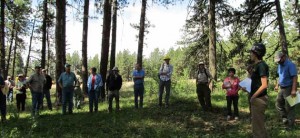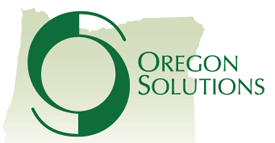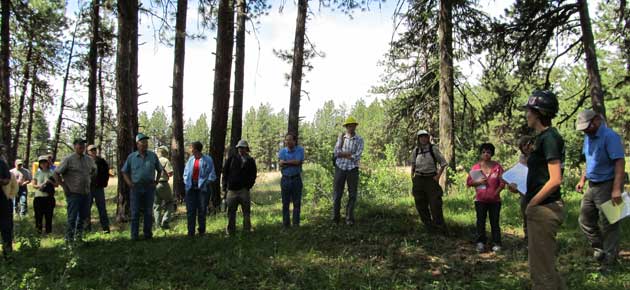
Project Synopsis & Timeline
In July of 2011, the US Forest Service sponsored a listening tour on the Umatilla National Forest with public, private, and nonprofit stakeholders. A critical mass of those in attendance elected to form a standing collaborative group to engage on vegetation management practices on the Umatilla National Forest. Members asked questions about what the management goals were on the Umatilla, how to describe conditions, and what metrics to use, and what the possibilities for experimentation in treatments might be.
And in early 2012, the group requested and received the Oregon Governor’s designation of their group – the Umatilla Forest Collaborative – as an Oregon Solutions process. As an Oregon Solutions project, the Umatilla Forest Collaborative worked to identify projects, crafted a restoration planning project proposal which aimed to develop a purpose and need statement and implementation plan for identified projects.
Over a six-month process, the Umatilla Collaborative focused on selecting two projects in specific parts of the Umatilla Forest. The dry forest Kahler Basin project in the Kahler Creek basin in Wheeler and Grant counties (forty miles southwest of the town of Heppner, Oregon) will include a combination of treatments, such as thinning and prescribed burns. The “cool/moist” forest project was later identified as the Thomas Creek project in Union County, about six miles northwest of Elgin, Oregon.
By the spring of 2012, the members of the collaborative all signed on to an Oregon Solutions Declaration of Cooperation, committing to their goal of developing recommendations to the Forest Service that would meaningfully contribute to lasting ecological, economic, and social resilience in and near the Umatilla National Forest. Together the Umatilla Collaborative developed an implementation plan for the 30,000-acre Kahler forest restoration project, built on capacity of the local watershed council to get the group going, raised funding to keep the collaborative going, and developed a road map for identifying a second project on cool/moist forest restoration.
Building on Collaboration
Much of the groundwork of collaboration for the Umatilla Collaborative group grew from the Forest Service’s and the State of Oregon’s unique partnership to increase investments to accelerate the pace, scale, and quality of forest restoration. Over the past two decades, place-based groups throughout Oregon have formed to collaborate around management actions on federal forests. These groups build social consensus around individual forest projects that achieve desired ecological, social and economic outcomes. The groups are inclusive and self-directed, and their work is funded through philanthropic and publicly-funded grant programs.
Governor’s Designation Letter (PDF)
Declaration of Cooperation (PDF)
Results
As of fall 2016, the first project on the Umatilla in years is underway, producing a mix of commercial and non-commercial forest products. The sale of these products will provide economic and ecological benefits to the communities around the Umatilla, funding both the local timber mills and resource improvement projects on the land following the timber harvest.
In addition, the group has provided collaborative recommendations that the Forest Service considered when coming to a decision on the Thomas Creek Restoration Project, the collaborative’s identified cool/moist forest project.
Combined, there are over 8,000 acres of forest land that will be under commercial management or commercial treatment. The Thomas Creek Restoration Project is intended to be a small-scale experiment to develop agreements on treating old clear cuts in a cool/moist forest with monitoring of the implementation to see how those treatments work. The lessons learned from the Thomas Creek project will be applied to work on larger scales on the Umatilla Forest in the future.
For both of these projects, the Umatilla Forest Collaborative came to consensus on guidelines for the Forest Service to hit in working towards decisions on implementation. As of fall 2016, commercial activity involving both projects is either just beginning or will be in the near future. The first sale from the Kahler project, the Strawberry Timber Sale, was auctioned in September 2016. It included a volume of 3.1 million board feet. The Forest Service is planning the second sale, the Henry Timber Sale, for late fall of 2016. For the timber mills in the region, maintaining those mills is crucial to the local economy, and both projects will help to build shelf stock that will help carry the mills through the next year or so.
For more information on this project, please contact Oregon Solutions Senior Project Manager, Pete Dalke.



